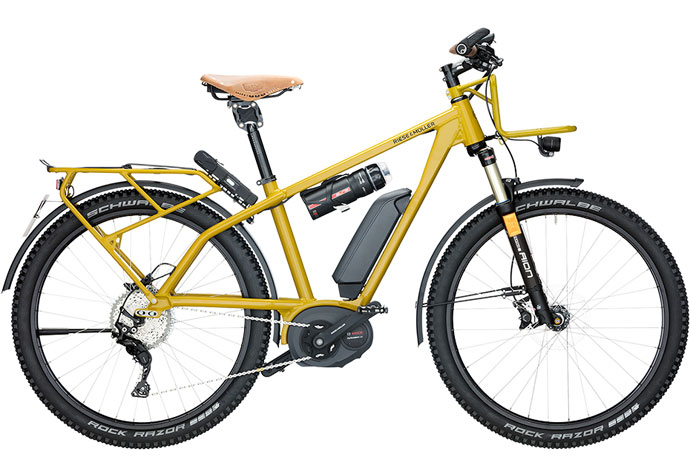
The government has acknowledged that emerging technologies such as e-scooters are ‘ripping up the rule book’ and will consult on the rules required to allow the new technology to operate safely.
Under plans announced by the transport secretary, Grant Shapps, e-scooters will initially be allowed in a series of ‘future transport zones’: Portsmouth and Southampton; the West of England Combined Authority (WECA); Derby and Nottingham; and the West Midlands.
According to Shapps: “Our groundbreaking future of transport programme marks the biggest review of transport laws in a generation and will pave the way for exciting new transport technology to be tested, cementing the UK’s position as a world-leading innovator.”
However, Britain has already fallen behind other countries where legislation governing use of e-scooters and speed-pedelecs is concerned. In other countries, e-scooters share or rental schemes are provided by Lime, Bird, and the Uber subsidiary Jump while here in Britain no such schemes cam operate. At the same time, the absence of legislation enabling legal use of e-scooters on public roads has not prevented their widespread use in city centres.
E-scooters and the law
Under current British law, e-scooter riders face a £300 fixed-penalty notice and six points on their driving licence for using them on the road or pavement.
Electric bicycles, speed pedelecs and the law
Electric bicycles, sometimes referred to as pedelecs, must not provide powered assistance beyond 15.5 mph (25 km/h) and maximum continuous rated power up to 250 W
If your cycle has pedals that propel it and an the electric motor of no more than 250 watts that cuts out once you’re travelling more than 15.5mph (25 km/h) then in the eyes of the law it’s an EAPC (electrically assisted pedal cycle) sometimes referred to as an e-bike, or pedelec
This means that you can ride it on the road or any cycle paths – anywhere a conventional bicycle can be used. It also means you won’t find it any trouble to insure. For example, the ETA charges no extra for insuring an electric bicycle and includes £5m third party cover and protection against battery theft as standard. Oh, and if you break down they’ll arrange for you and your electric bike to be taken to a repair shop, railway station or home (within a 25-mile radius).

Who is allowed to ride an electric bike in the UK?
You don’t need a licence, vehicle tax or insurance to ride an electric bicycle but must be over 14 years old.
Electric bicycle law in Northern Ireland
To legally ride an electric bike in Northern Ireland you’ll need to wear an approved motorbike helmet, display the registration mark on the back of the bike (DVLA will send this to you once the bike is registered) have insurance. Cycle Insurance from the ETA will cover this.
Remember that in Northern Ireland, you cannot ride your electric bike on cycle paths.
Speed Pedelecs
If your electric bicycle is equipped with a motor that’s more powerful than 250W, or if it assists you when you’re riding more than 15.5 mph – in the eyes of the law it’s a motorcycle and as such needs to be registered, insured and taxed. You’ll also need the appropriate driving licence and helmet approved for motorbike use. These so-called speed pedelecs have been given their own type approval in Europe so that they can be ridden like bicycles subject to certain conditions but no such provision exists here in the UK.
These other kind of bikes (also called speed pedelecs) cannot be ridden on cycle paths and must be approved by the DVLA. So while it’s easy to de-restrict an e-bike to get the motor assisting you with higher speeds, it is not very wise to do so, both for regulatory and safety reasons.
My electric bicycle has a throttle – is it legal?
Since January 1 2016, the only throttles legal on new bikes are those that provide starting assistance ie. assist the rider without pedalling up to a maximum speed of 3.7 mph. At that speed, the throttle cuts off. If the cyclist pedals at the same time, the throttle can still assist up to the 15.5mph limit.
Bikes sold before January 1 2016 may have a full-speed throttle (you don’t need to pedal at all to reach the 15.5mph limit) but are considered legal due to having been sold before the law changed.
The ethical choice
The ETA was established in 1990 as an ethical provider of green, reliable travel services. Over 30 years on, we continue to offer cycle insurance , breakdown cover and mobility scooter insurance while putting concern for the environment at the heart of all we do.
The Good Shopping Guide judges us to be the UK’s most ethical provider.


Vincent Edwards
I have visited urban areas of France and USA where e-scooters are very popular. As a pedestrian it is utterly terrifying – they are ridden at speed absolutely everywhere and anywhere. It’s bad enough having to deal with pavement cyclists and pavement parkers/drivers – there is now a new breed of menace on the streets.
Unless using e-scooters on pavements is prohibited and the law can be effectively and rigorously enforced I would prefer that their use not be legalised – useful and green as they may be. Surely the ultimate form of green transport is walking, and we should do nothing to discourage that.
Scott Watsonn
Vincent Edwards – That’s such an old fashion reply! All you are saying it’s new technology (for UK as it’s been available for past 4 or more years in rest of Europe) and you are scared of it so nobody should use it. I want to use it to commute to work instead of using my car that pollutes and costs me way more then e-scooter ever would. You are just a boomer an enemy of progress.